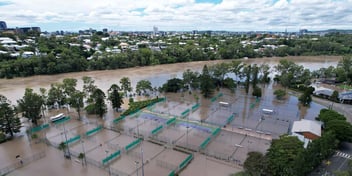Queensland drinking water dams switch on to hydropower
Queensland is turning its drinking water dams into hydropower hubs as part of its push to achieve 50% renewable energy by 2030.
Hydro-electric plants work by capturing the energy of falling water to generate electricity. A turbine converts the kinetic energy of the falling water into mechanical energy, which is then converted into electrical energy by a generator.
With the production of drinking water such an energy-intensive process, Queensland energy minister Anthony Lynham said the government was looking at hydropower as a way to reduce operational costs and the overall environmental footprint of water treatment in the state’s south-east.
State-owned utility Seqwater already produces hydropower at its Wivenhoe and Hinze dams and the Landers Shute Water Treatment Plant.
It also switched Somerset Dam back to producing renewable energy this month, after an $11 million restoration that increased its capacity from 3.2 to 4.1 megawatts.
“Somerset Dam will remain one of the region’s major drinking water storages with the added benefit of being able to produce green energy for South East Queensland,” Lynham said.
But the Sunshine State isn’t stopping there. Lynham said a study had been commissioned to assess the technical and economic feasibility of hydropower generation across all state dams in South East Queensland.
“The study will examine sites for traditional hydro-electric plants at existing dams as well as the feasibility of larger pumped hydro storage,” he said.
“Electricity is the largest single cost to the production of drinking water. Seqwater believes there are significant opportunities available to offset electricity costs by increasing its renewable energy generation and by optimising energy consumption.”
Seqwater estimates about 30% to 40% of its annual energy consumption could be provided by renewable energy it generates over the next decade.
“In turn, this can help reduce the costs of water treatment and the supply of drinking water to businesses and households,” Lynham said.
"It also could, conceivably, put downward pressure on electricity prices as more and more renewable energy – solar and hydro – comes on line.’’
The hydropower generation feasibility study is expected to be completed by the end of 2019.
Related podcast:
https://omny.fm/shows/australianwater/david-evans-on-smarter-power-strategies

